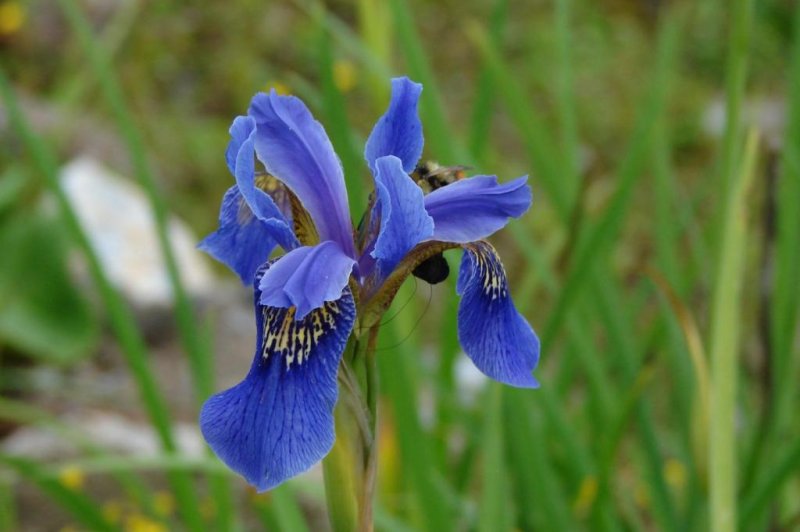Nectar is not just a 'come on' to bees, it's a weapon of distraction, researchers found in a recent study. Pictured, an Iris bulleyana in China. Photo by Scott Armbruster
Aug. 21 (UPI) -- New research has found that nectar plays a different role than previously thought -- by acting as the ultimate weapon of distraction for flowers.
Nectar is the honey produced by flowers that provides a come-on to bees and other insects to attract them to pollinate the flower. But researchers found recently that nectar plays a larger role beyond the obvious one.
"Contrary to the accepted wisdom, the role of nectar seems in this instance to not be just about attracting and rewarding pollinating insects," Scott Armbruster, professor of Ecology and Evolution at the University of Portsmouth, said in a press release,
"It seems nectar and nectaries, the glands which produce it, attract herbivores that would otherwise feed on other flower parts. Thus the nectar and nectaries may be acting as a decoy. Like nectar thieves and robbers, the herbivores we observed have a high energy demand, and because nectar is rich in nutrients, it appears flowers are using it as a distraction, to keep herbivores away from critical reproducing parts of the flower, which are also edible.They are sacrificing their nectar and nectaries for the greater goal of maintaining other floral parts that are critical for attracting pollinators, and hence being pollinated."
Scientists studied the role played by herbivores such as sawflies that eat petals and nectar from an Iris bulleyana flower in the Himalayas.
The study, published in the August edition of Biology Letters, found that 98 percent of the flowers studied in natural conditions were damaged by herbivores, but in 85 percent of the flowers, the damage was limited to just the nectaries.
The findings suggest that the nectar was being used to protect more critical parts of the plant. When sawfly herbivores grazed on the petals, they were damaged, causing fewer pollinators to visit the flower. Having the calorie rich nectar as a distraction protected the petals from damage.
"The results are clear that floral tissues with a higher reproductive importance are essentially protected through the presence of sacrificial parts, the nectaries and nectar," Armbruster said.















